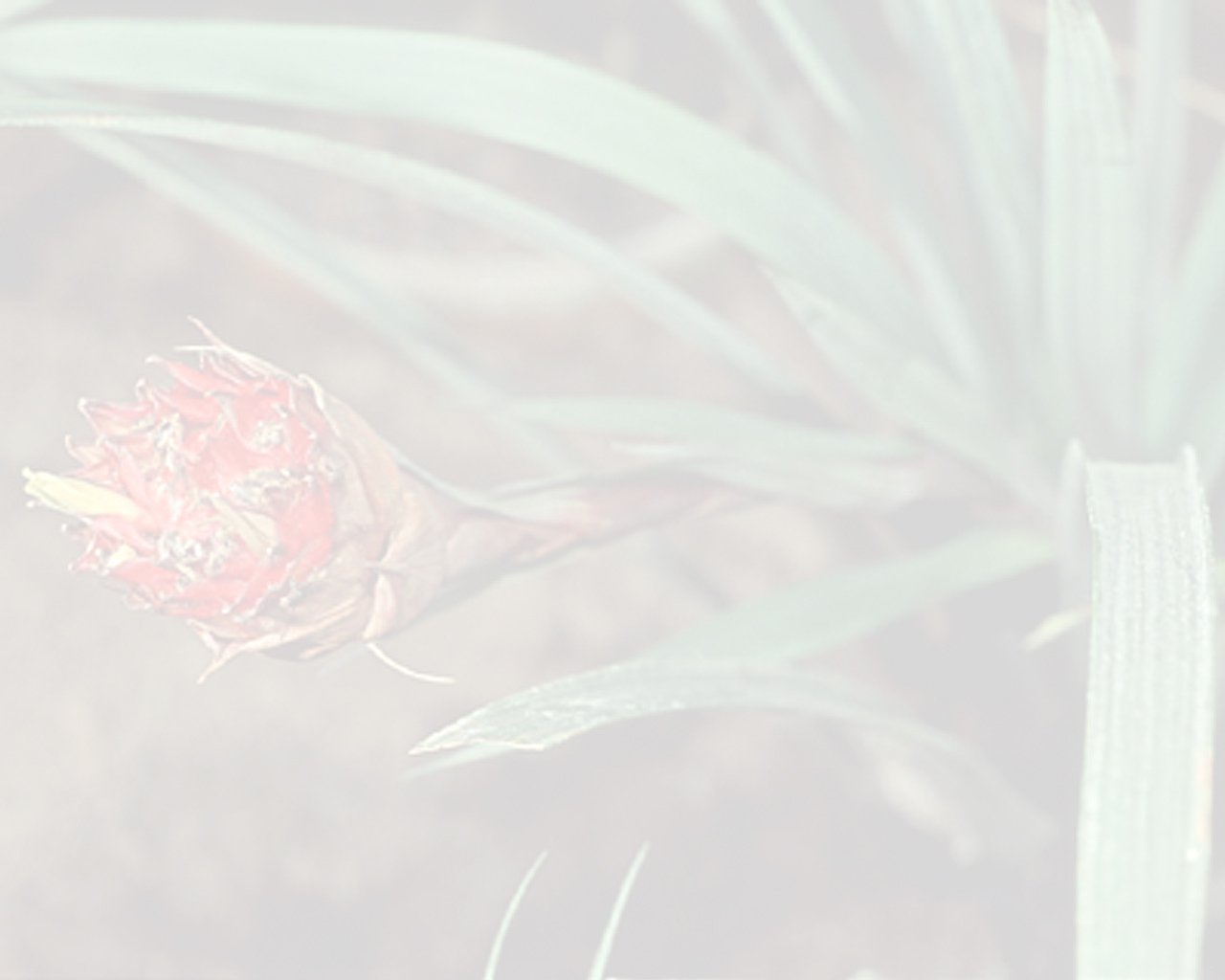



plant stemless, growing in groups, flowering to 70 cm high (fig; 26, right). leaves numerous, almost erect, forming a narrow tube at the base to 40 cm high funnel rosette ( fig; 26, left) sheath longish ovate, to 18 cm long and 10 cm wide, upper side pale brown scaled blades lingulate, broad rounded, narrowing to a short tip, to 35 cm long, above the sheath to 8 cm wide, grey green, almost glabrous, underneath strong grey waxed (fig; 26, left; fig; 27). inflorescence: peduncle to 40 cm long, 8 mm thick, as long or shorter than the rosette leaves; erect or bent upwards, round, green, glabrous; peduncle bracts densely imbricate, longer than the internodes, adjacent to the peduncle with long sheath and short blade, green, glabrous, waxy coated, continuing to the floral bracts above (fig; 28, left); fertile part simple, mostly tubular, acuminate, to 14 cm long, at the base forming a 4 cm thick pine cone shape, (fig; 28, left.) floral bracts polystichous, broad triangular, about 2,5 cm long, 2,3 cm wide, blunt at the tip, sturdy, with membranous edge, shiny green, scattered spots (fig; 28 middle). flowers sessile, white; sepals 1,5 cm long, 8 mm wide, lanceolate, acuminate, membranous, white, scattered brown scales; petals white, tongue-shaped, blunt, at the tip rounded, about 3 cm long, 4 mm wide; spreading at anthesis, (fig; 28 middle). stamens white, with ribbon like filaments, shorter than the petals, exceeding the thick style (fig., 28 middle).Translated by Butcher (13-05-2015) from: Rauh 1976a. (protologue) Bromelienstudien (Mitteilung 5). I. Neue und wenig bekannte Arten aus Peru und anderen Lšndern .